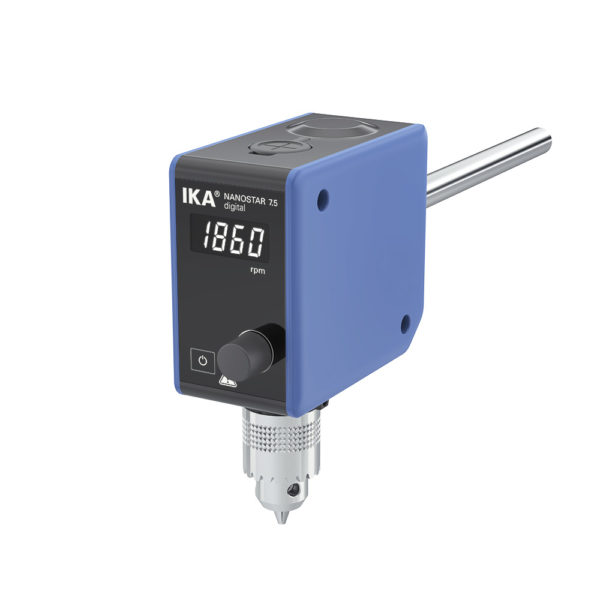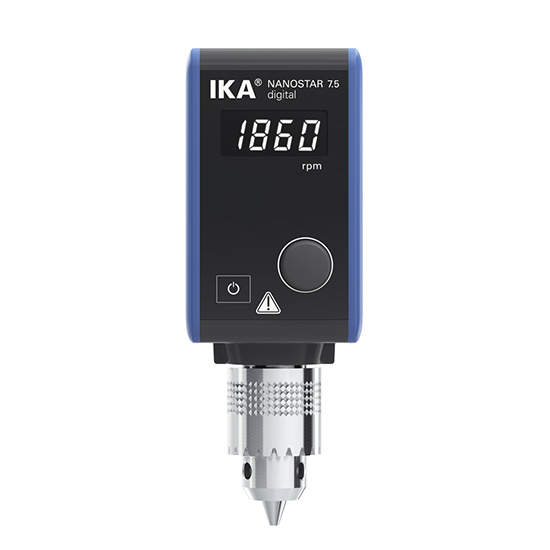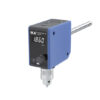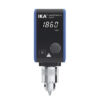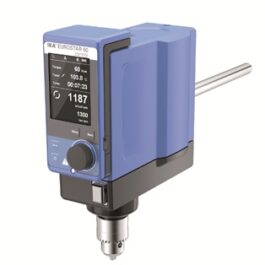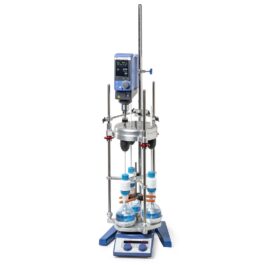IKA NANOSTAR 7.5 digital
The overhead stirrer NANOSTAR 7.5 digital is 30 % smaller than the MICROSTAR 7.5 digital and therefore even more space-saving. However, its performance remains the same. NANOSTAR 7.5 digital convinces with perfect basic functionalities, its compact design and is with just 0,8 kg easy to handle.
NANOSTAR 7.5 digital guarantees a constant torque over the entire rpm range from 50 – 2.000 rpm.
Operation takes place using a stable rotary knob. The display clearly shows the rotational speed.
Regular software updates can be undertaken rapidly and simply via the USB interface.
| Stirring quantity max. per stirring position (H2O) | 5 l |
| Motor rating input | 32 W |
| Motor rating output | 22 W |
| Motor principle | Brushless DC |
| Speed display | LED |
| Speed min. | 50 rpm |
| Speed min. | 0/50 rpm |
| Speed max. | 2000 rpm |
| Viscosity max. | 4000 mPas |
| Output max. at stirring shaft | 15.7 W |
| Permissible ON time | 100 % |
| Torque max. at stirring shaft | 7.5 Ncm |
| Speed control | Turning knob |
| Setting accuracy speed | 1 ±rpm |
| Deviation of speed measurement n > 300rpm | 1 ±% |
| Deviation of speed measurement n < 300rpm | 3 ±rpm |
| Stirring element fastening | chuck |
| Chuck range diameter | 0.5 – 8 mm |
| Hollow shaft, inner diameter | 8.5 mm |
| Hollow shaft (push-through – when stopped) | yes |
| Fastening on stand | extension arm |
| Extension arm diameter | 13 mm |
| Extension arm length | 160 mm |
| Nominal torque | 0.075 Nm |
| Timer display | none |
| Housing material | alu-cast coating / thermoplastic polymer |
| Dimensions (W x H x D) | 53 x 147 x 130 mm |
| Weight | 0.8 kg |
| Permissible ambient temperature | 5 – 40 °C |
| Permissible relative humidity | 80 % |
| Protection class according to DIN EN 60529 | IP 54 |
| USB interface | yes |
| Voltage | 100 – 240 V |
| Frequency | 50/60 Hz |
| Power input | 32 W |
| Power input standby | 0.3 W |
| DC Voltage | 24 V= |
| Current consumption | 1300 mA |
UK / Europe / Global Delivery
Developed in collaboration with our clients / Bespoke design service
Committed to developing sustainable & practical improvements for scientists worldwide

Martyn Fordham, MD

